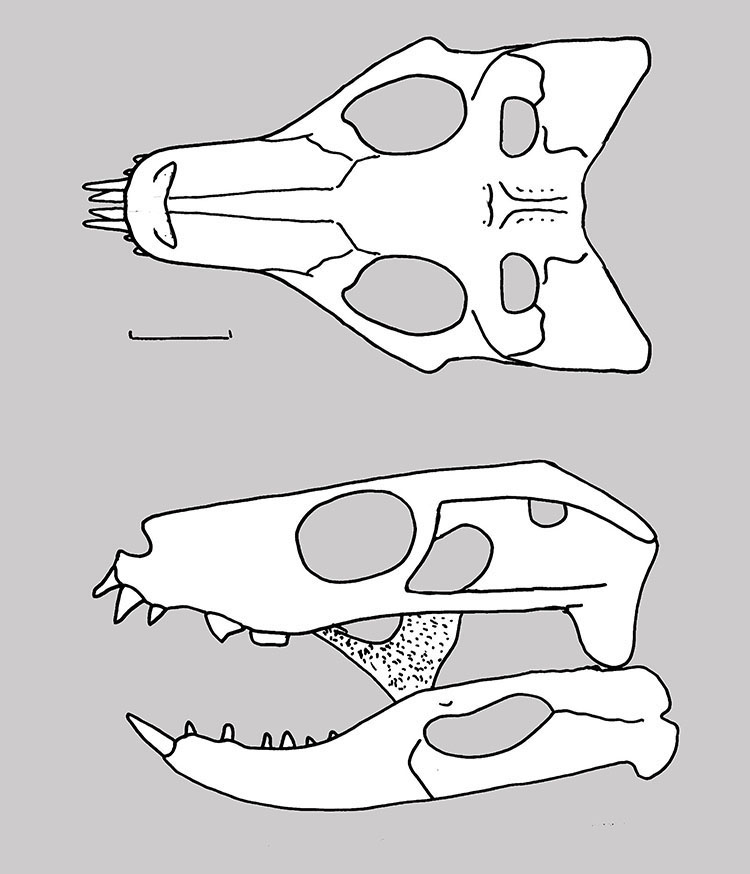
Genus: Yacarerani NOVAS, PAIS, POL, CARVALHO, SCANFERLA, MONES & RIGLOS,
2009
Etymology: Guarani Indian language, "yacare," their name for the South American
crocodile,
and rani, "first."
Species: boliviensis NOVAS, PAIS, POL, CARVALHO, SCANFERLA, MONES & RIGLOS,
2009
Etymology: In reference to the Republic of Bolovia.
Holotype; MNK-PAL5063
Locality: A locality cropping out in Amboro National Park, 17°34'7"S, 63°51'3"W, Santa Cruz de la Sierra, Bolivia.
Horizon: Cajones Formation.
Biostratigraphy:
Age: Turonian Stage, Uppermost Gallic Subepoch-Santonian Stage, Lower Senonian Subepoch, Lower Gulf Epoch, Late Cretaceous.
Material: A complete and exquisitely preserved skeleton.

Yacarerani boliviensis (modified from Novas et al. 2009).
Referred material:
MNK-PAL5064-A: Almost complete lower jaws articulated with partial right pterygoid, ectopterygoid, jugal, squamosal, partial quadrates, 12 vertebrae, left femur, proximal end of right femur, partial right tibia, and partial right fibula.
Note: 2 complete, unhatched eggs and an isolated eggshell fragments.
LEARDI, POL, NOVAS & RIGLOS, 2015
MNK-PAL5064-B: Semi-articulated specimen represtented by postcrania recovered from the same block as MNK-PAL5064-A.
MNK-PAL5064-C: Isoalted postcrania recovered from the same block as MNK-PAL5064-A.
MNK-PAL5064-D: Isolated mandibular bones (Splenial and coronoid) and disarticulated postcrania including axial and appendicular elements.
MNK-PAL5064-E: Fragmentary crania (fragments of premaxilla, maxilla and jugal) and associated postcrania including an articulated cervical and anterior dorsal vertebrae, both humeri, ulnae, partial radius, radiale, and right ischium.